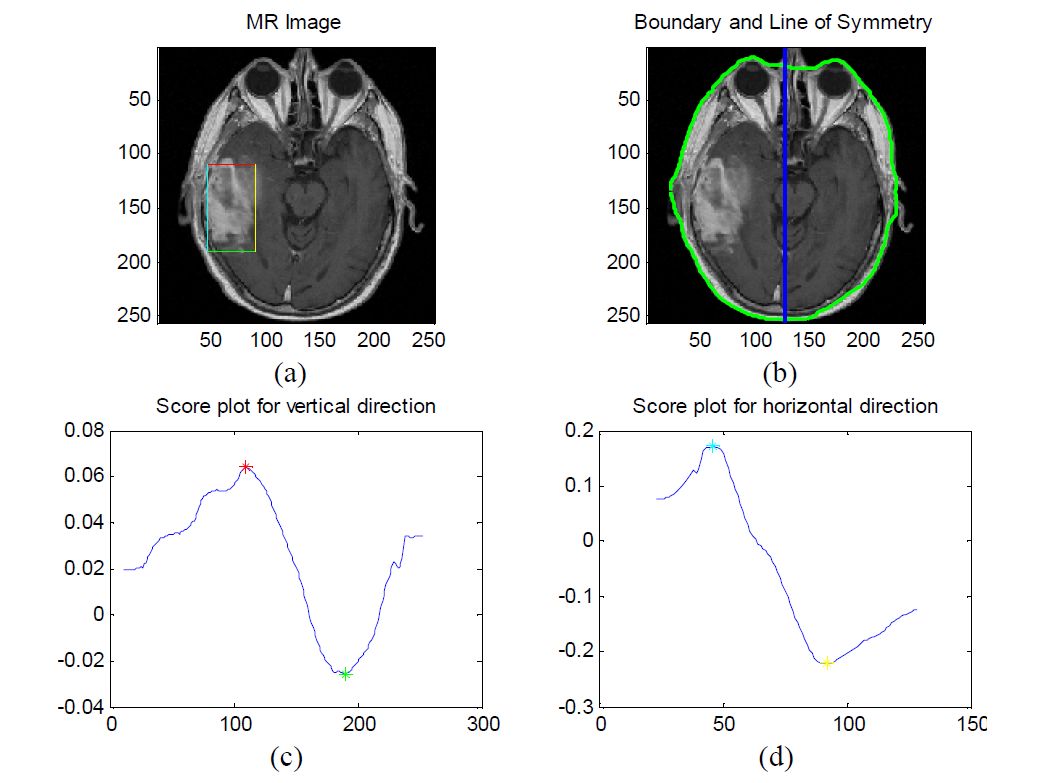Super-Fast Localization of Brain Tumor

Using the symmetry structure of brains, we designed a Bhattacharya coefficient (BC)-based score function to find a bounding box around tumor/edema on MR images. This an unsupervised method that takes two scans of an image, one in the vertical and another in the horizontal direction, to locate a tumor/edema. It is a change detection method using intensity histograms. First, we detect skull boundary and axis of symmetry as shown in (b). Next, we scan the picture in vertical direction to build a score function shown in (c). Similarly a horizontal scan of the picture builds a score function shown in (d). The maximum and the minimum points of the score functions give us the coordinates of the bounding box shown in (a). During each scan histograms on the left and the right side of the line of symmetry is compared by our BC-based score. With very mild assumptions, we proved why the method works. To see the proof, please look into our publications.
Related Publications
- B. Saha, N. Ray, R. Greiner, A. Murtha, H. Zhang, “Quick detection of brain tumors and edemas: A bounding box method using symmetry,” Computerized Medical Imaging and Graphics, vol.36, no.2, pp.95-107, 2012.
- N. Ray, R. Greiner, and A. Murtha, ″Using symmetry to detect abnormalities in brain MRI,″ Computer Society of India Communications, vol.31, issue.10, pp.7-10, January 2008.
- N. Ray, B. Saha, and M. Brown, “Locating brain tumor from MR imagery using symmetry,” Asilomar conf. on signals, systems, and computers, 2007.